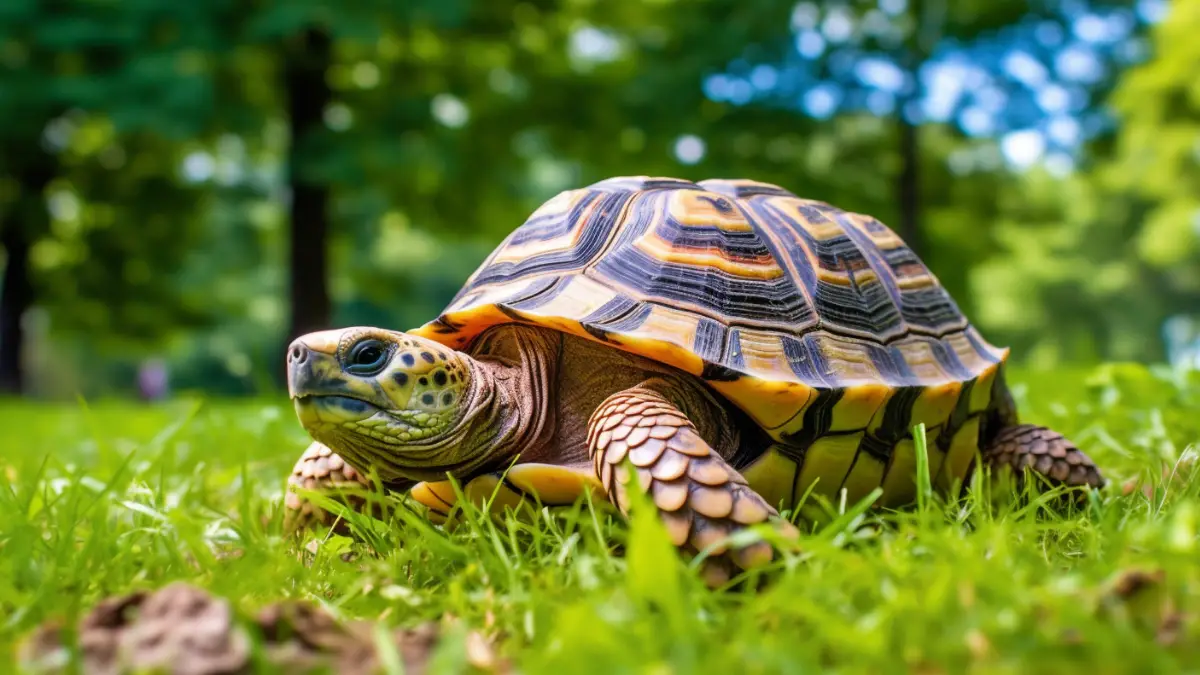Tortoise Skin Problems: All You Need To Know
A tortoise’s skin is one of the most important parts of their body. It protects them against dehydration and helps them keep away infections. However, like most parts, they develop various types of skin problems that can be fatal.
So, what are the common tortoise skin problems? The common issues with the tortoises’ skin include shell rot, Myiasis, and Abscesses. These reptiles are also known to develop dry skin, usually caused by dehydration. Get the tortoise to a veterinarian immediately for treatment.
Read on to learn more issues tortoises can develop on their skin, including their symptoms and solutions.
Common Tortoise Skin Problems: All You Need to Know
Contents
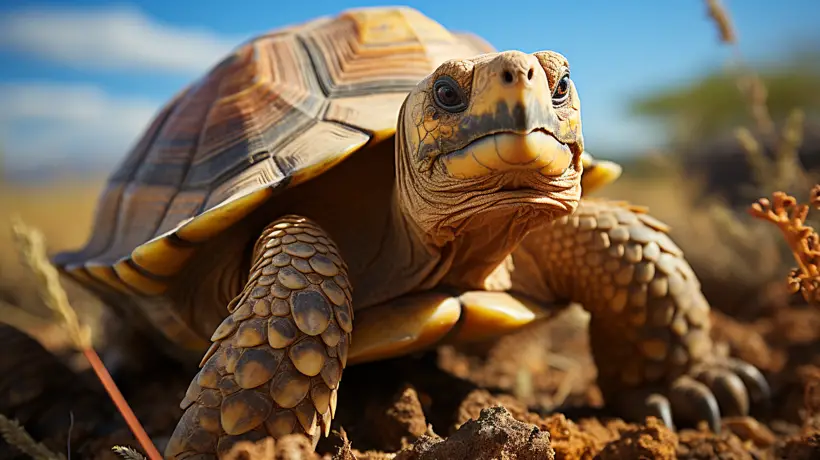
Usually, tortoise skin is tough and contains scales that form on the epidermis, the outermost layer. The tortoise’s shell is also part of their skin and contributes to thermoregulation and protection. However, it’s known to develop various issues, including,
1. Shell and scale rot
Shell and scale rot are among the common and deadliest problems with the tortoise’s skin. Roting occurs when fungal or bacterial infection gets into the blood.
The usual reasons behind this issue developing include;
- Dirty living conditions
- Injuries and damage
- Dry environment
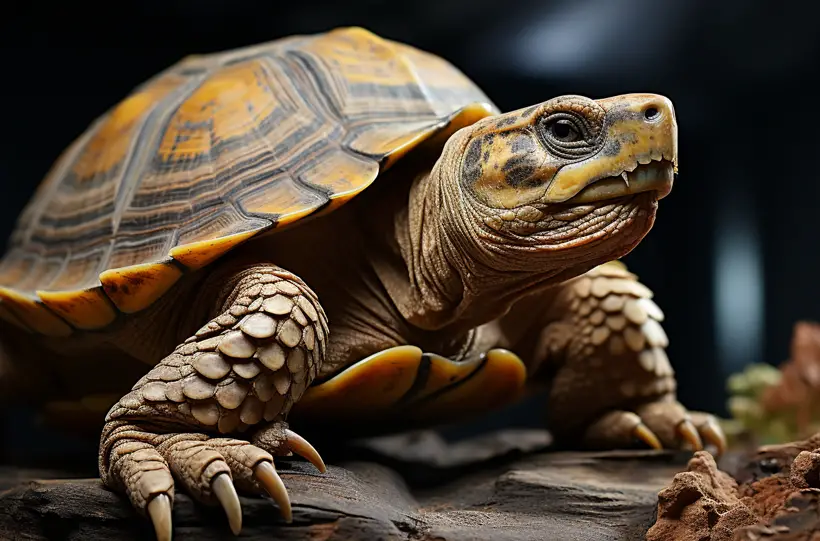
The common symptoms of shell and scale rot include;
- Pits
- Soft spots
- Cracks on shell and scales
- Foul smell
- Blisters on the scales
Shell and scale rot are treatable first by improving the tortoise’s living environment and conditions. Spot-clean the tortoise’s living quarters to remove any waste available.
2. Myiasis
Myiasis infestation, also called fly strike, is another common skin problem in tortoises. Myiasis is the wound that forms after the blow flies, dipteran flies’ larvae burrow in the skin.
Your tortoise can attract the flies if it has an open wound or a loose stool. The flies usually lay their eggs on the tortoise’s skin around the tail. The issue requires immediate treatment by a veterinarian to avoid further damage to the skin.
3. Abscesses
Abscesses are lumps that form on the tortoise’s skin and have yellow pus inside. The common type of abscesses in tortoises is aural abscesses, which affect their ears. However, they can form on any other part of their skin.
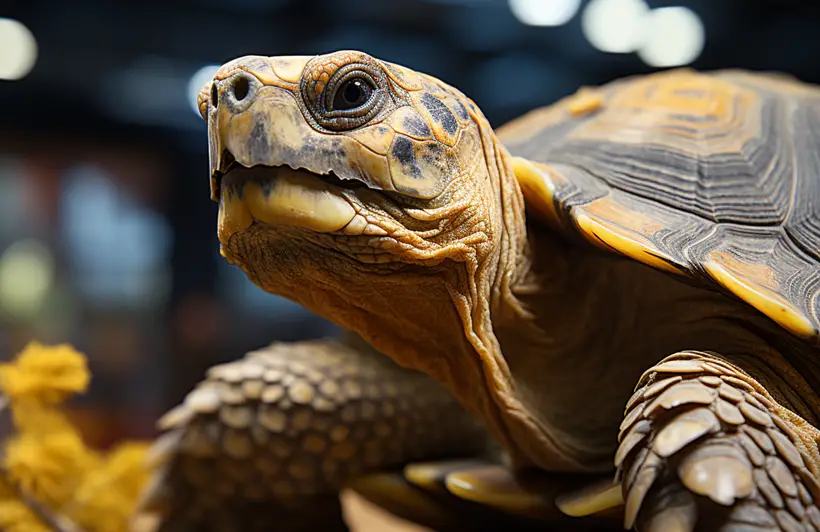
The abscesses are caused by bacteria, which get to the tortoise through an injured part, which they are prone to develop. However, abscesses can be a result of various other things, including;
- Contaminants
- Unfavorable temperatures
- Insufficient access to UV light
Swelling in the area of the tortoise’s ear is a usual sign of abscesses, and the pet should be treated immediately. The Veterinarian can inject the tortoise with antibiotics if at an early stage.
4. Dry Skin
Another common issue with the tortoises’ skin is dryness, where the skin and sometimes the shell appear dry. The skin appears puckered and can get flaky in the long run.
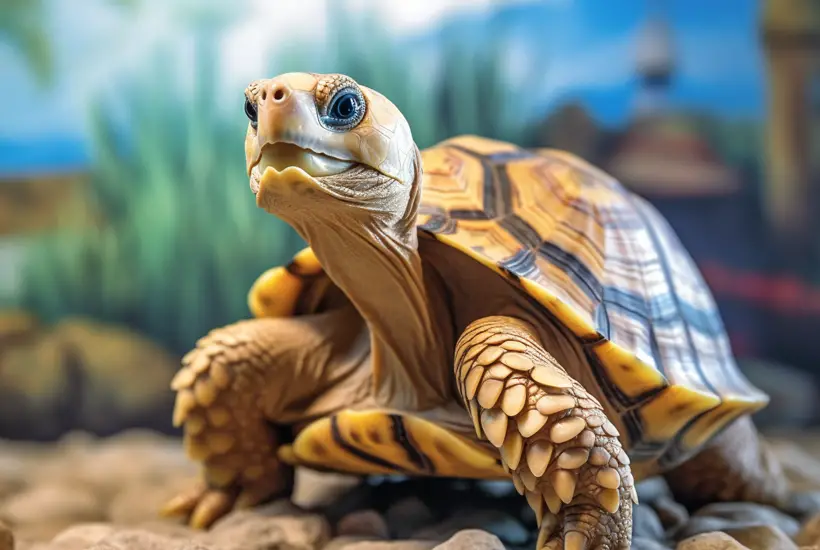
The reasons for these skin issues include;
- Dehydration
One of the reasons behind the tortoise’s skin dryness is due to dehydration. The tortoise should get a constant supply of clean water for drinking in a large but shallow bowl.
A dehydrated tortoise may also show symptoms like;
- Tearing and sunken eyes
- Dry excretes
- Lack of appetite
- Lethargy
Put your tortoise in the large bowl with warm water for more than 15 minutes to rehydrate it.
- Lack Of UV light and Calcium
Your tortoise’s skin can also be dry due to a condition known as Metabolic Bone Disease. This condition is a result of the tortoise lacking exposure to UV light and calcium in their diet. The tortoise then gets calcium from their skin, causing dryness.
Allow the tortoise some time under the sun or other beneficial lighting to give them the necessary nutrients. Also, provide them with a balanced diet with lots of calcium.
5. Color Change
Another problem with the tortoise’s skin is color Change. While most color changes are normal and not a threat to its health, some show a developing issue with the tortoise’s health.
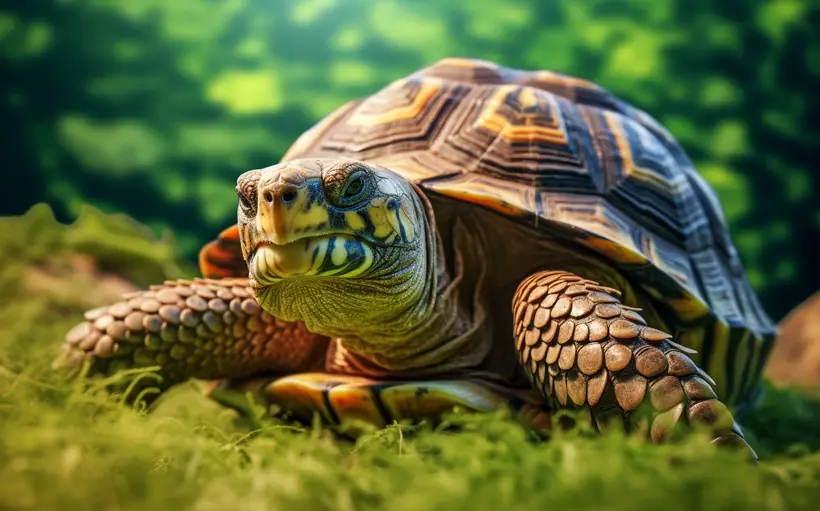
If the skin begins to turn yellow, this might show things like;
- Liver disease or bile duct obstruction causing jaundice
- Acute liver failure
- Too much protein in the diet
The skin may also turn black, which sometimes is not concerning, as most tortoises turn darker as they age. However, the dark color on the underside of the tortoise’s skin can signify irritation or infection from the substrate in their cage.
Skin turning white is usually normal and signifies that the tortoise is preparing for shedding, which it does after every few months. However, it can be a sign of fungus growing under the skin. Consult a veterinarian for diagnosis and treatment.
FAQs
When tortoise owners research the common skin issues these reptiles are prone to, there are frequent questions they often ask. They include,
Skin shedding is usually normal in tortoises, happening every few months. However, natural peeling is slow and gradual, and if your tortoise is shedding too fast or in large quantities, seek medical advice.
Tortoise Skin issues can be fatal if left untreated for a long time. Issues like shell and scale rot, myiasis, and abscesses are among the fatal problems if untreated for a long time. Observe symptoms of a developing issue to get the tortoise treated on time.
Vitamin A can cause dry and flaky skin on the tortoise’s skin if ingested in large quantities. Lack of this vitamin can cause the mouth and eyes to swell. It’s best to serve vitamin A in moderation to avoid causing skin problems.
In Conclusion
Tortoises’ skin issues can be fatal if unidentified and not treated on time by a professional. The common ones include shell and scale rot, abscesses, myiasis, and dry skin. The problems have various causes, including an imbalanced diet, living conditions, and hygiene.
Lean and observe symptoms of these tortoise skin problems to request medical attention on time. Also, get the tortoise regularly checked by a professional who will spot a developing skin issue early.

